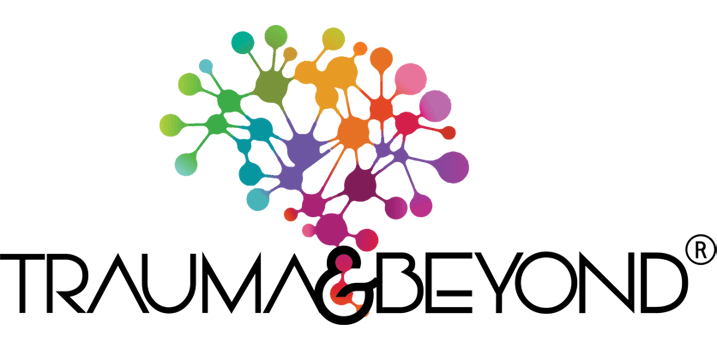We would like to invite you to go to the Treatment Method section on our site. You’ll see that we offer a variety of treatment methodologies: Affect Regulation, Attachment – Relational Therapies, Mindfulness Therapy, Art Therapy, Cognitive Behavioral Therapy, NARM, Somatic Experiencing, and Sensorimotor Psychotherapy to name a few. When you contact us, we’ll sit down with you to explore the best options for treating your trauma. In this blog, we’ll go over how Trauma Resiliency (TRM) works, and what you can expect from this treatment.
Trauma Resiliency (TRM) With Us
The main focus of this particular treatment method is to restore balance to the mind as well as the body after traumatic experiences. When you’re faced with a dangerous situation, or one that’s life-threatening, we all have automatic, natural defense responses. This treatment is a body-centered approach that explores how threat and fear impacts our nervous system leading to dysregulation. During this treatment, the goal is to help clients develop new, more resilient neural circuits, in part by connecting to their inner, natural resources.
Multiple Skills
This particular methods works by incorporating nine skills. The goal of these skills are to stabilize the nervous system by managing sensations; thus bringing the nervous system back into balance. By processing through sensations in the body, a person can begin to develop tools to regulate their nervous system. In this way, a person who’s processing a traumatic event can increase their window for resiliency.
The Nine Skills of TRM
The first three of these skills, grounding, tracking and resourcing can be used by clients to create safety and regulation. Using these skills helps clients to gain a sense agency knowing that they can do something about their feeling state. These nine skills are tools that can be used individually or in tandem with each other. We help clients learn to utilize these skills during their day-to-day experiences. We help them learn to “take-their temperature,” throughout the day and if noticing increased levels of distress or dysregulation they can begin to practice “calming skills,” as taught in TRM. The lesson is to use these throughout your day, not just once and move on, but to use each time we feel we are leaving our windows of tolerance. While using these skills we are developing and building new neural pathways in the brain by wiring together what’s firing together (Dan Siegel).
Clients begin with learning to use grounding skills to bring themselves into the “moment of now.” “Grounding” doesn’t mean that someone has to be “brought down” it refers to being fully present within the moment. It means staying in one place, mentally, being completely present without drifting off or letting anxiety carry you away. Tracking involves the client and practitioner monitoring and reading sensations. Through, “Resourcing and Resource Intensification,” clients learn to engage internally with images,memories, figures, that help wire in moments of calm or joy, “ non-traumatic sensations ,” within the neural pathway to help increase capacity for experiencing positive factors.
Continued TRM Skills
The fourth skill is called “Gesturing/Spontaneous Movement.” This refers to self-soothing gestures, and just bringing a general awareness to spontaneous movements, gestures and actions that soothe one and help them to feel better.
Skill five, “Help Now,” is designed to give the patient techniques that can help their resiliency, draws upon their inner resilient nature so that they’re better able to step into their own life.
“Shift and Stay,” the sixth skill of TRM, focuses on sensations of well-being and supporting the client being able to move away from one sensation (unpleasant) and move into another sensation pleasant).
The seventh, “Titration,” is a bit different: it can be a bit challenging, as it gradually exposes the client to sensations of distress, but at the same time experiencing it in small tolerable “bite-size” moments.
The eighth is called “Pendulation,” in which the client alternates between resource sensations and traumatic ones. The ninth skill of TRM (but not necessarily the last) is called “Completion of Survival Responses.” In this, the client works to complete blocked responses, working to overcome their traumas.
Just as every person is different, so too are their traumas. Indeed, even if a specialized or certified trauma professional from the Trauma and Beyond Center believes that TRM is right for you, they may go about it differently. Some will only incorporate one or two of the skills mentioned above, while others may use quite a few of them. Depending on the practitioner, some of the names may vary, but no matter how the TRM is incorporated into trauma treatment, the end goal is the same: helping you to lead a more fulfilling, meaningful life free of the traumas that have held you back.
As we mentioned, TRM is just one of the many methods we have of going about helping our patients. When you contact us for a phone consultation, we’ll listen to you, and then we’ll let you know how we can help. Our professionals can put together a personalized, individual plan for you. That way, you have a treatment plan that’s made specifically for you and your traumas. There’s no “cookie cutter,” “one size fits all” ideas here: instead, we put together the most complete and comprehensive plan for your trauma, so that you can lead the life you want to. For more info, check out our site www.traumaandbeyondcenter.com or call us at (818) 651-0725.


